#terracotta figurines
Text
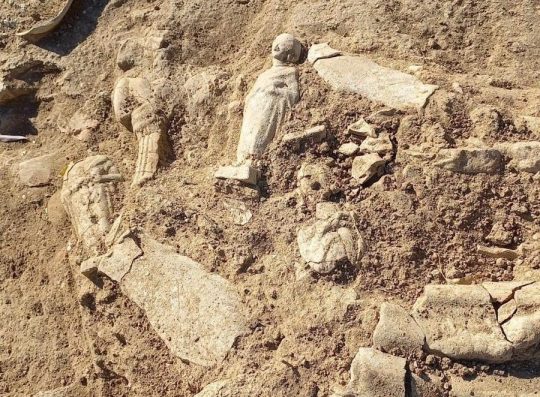
Rich Votive Deposit Discovered in Sicily's Valley of the Temples
At least sixty terracotta figurines, female protomes, and busts, oil lamps, and small vases, a rich votive deposit of bronze fragments were found in the Valley of the Temples in Agrigento, on the southwest coast of Sicily.
The objects were found in House VII b, which forms part of the housing complex north of the temple of Juno. The campaign is fully funded and supported by the Sicilian Region through the Valley of the Temples Archaeological Park, directed by Roberto Sciarratta, and is led by archaeologist Maria Concetta Parello.
In an announcement published by the Sicilian Region Institutional Portal: “The findings allow us to understand the dynamics of the destruction of Agrigentum in 406 BC by the Carthaginians, when the inhabitants had to flee in exodus towards the city of Gela.”

The votive deposit, which would appear to have been arranged above the destruction levels of the house, may tell the story of the time when its objects were recovered by the Akragantines after the destruction. To define with certainty the function of the interesting deposit will require further research, paying close attention to the stratigraphic connections between the deposit and the living and abandonment levels of the house.
The Valley of the Temples forms part of the ancient city of Agrigentum, situated in the province of Agrigento, Sicily. Since 1997, the Valley of the Temples (covering 3212 acres) has been included in the UNESCO World Heritage List.
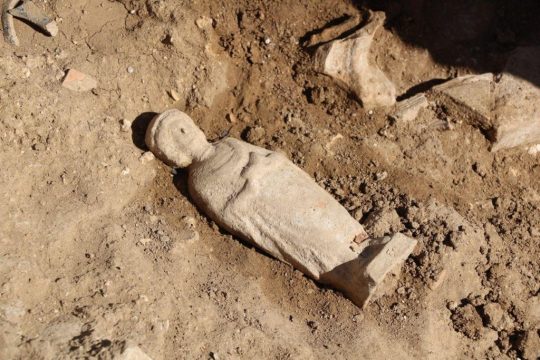
According to the Greek historian, Thucydides, Agrigentum was founded around 582-580 BC by Greek colonists from Gela in eastern Sicily, with further colonists from Crete and Rhodes. It was routed by the forces of Carthaginian general Himilko in 406 B.C. Agrigento’s residents fled to nearby Gela when Himilko sacked their city, but then he took Gela too. All of the Greek colonies on Sicily fell to Himilko and were made vassals of Carthage. Punic primacy would not last long, however. Timoleon of Corinth defeated Carthage in Sicily and liberated the Greek cities in 399 B.C.
By Leman Altuntaş.
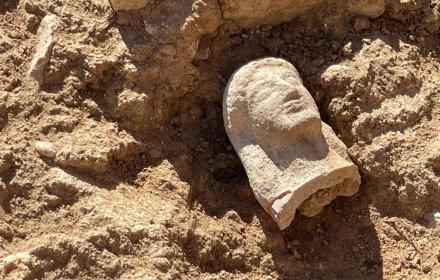
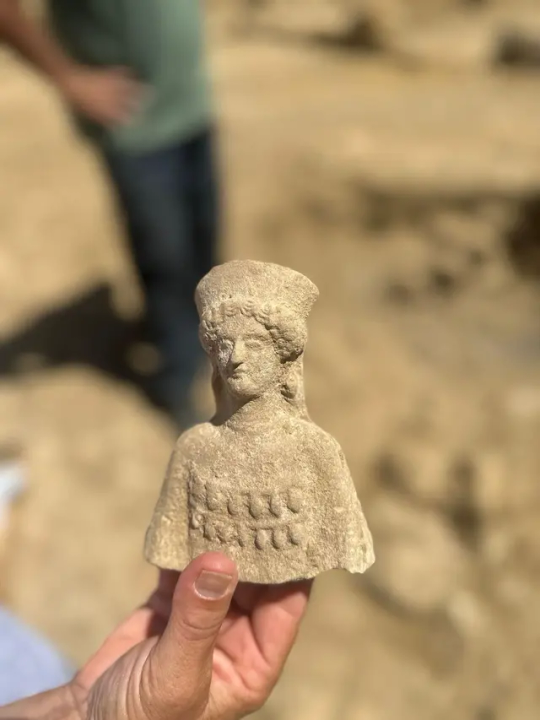

#Rich Votive Deposit Discovered in Sicily's Valley of the Temples#Valley of the Temples in Agrigento#temple of Juno#terracotta figurines#ancient artifacts#archeology#archeolgst#history#history news#ancient history#ancient culture#ancient civilizations#ancient sicily#ancient greece#greek history#greek art
273 notes
·
View notes
Text
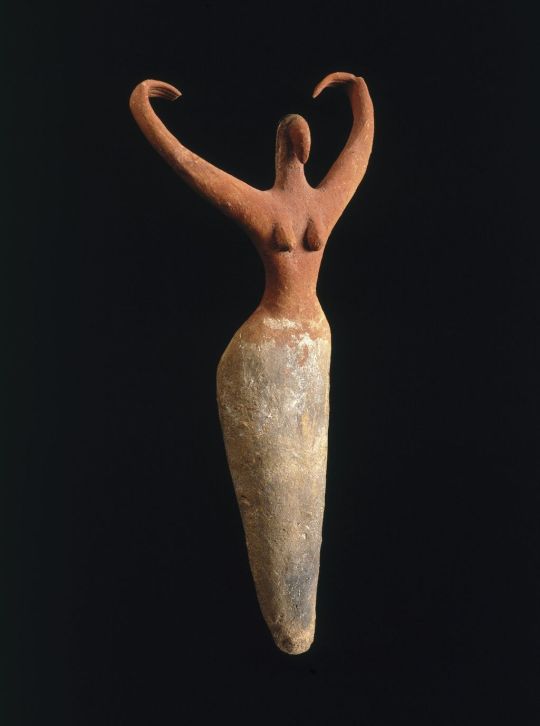
woman figurine, terracotta, 3600 bc s
#woman figurine#sculpture#BC#terracotta#ancient Egypt#Egyptian#my post#btw it's not really a Venus as venues we call women figurines from palaeolithic#usually about 50-10 thousand years bc#but when it comes to basic features as well as hypothetical function it may have served I would call it a much later venues:)
2K notes
·
View notes
Text

Ancient Greek terracotta figurine (16.5 cm = 6.25 in high), depicting a peasant carrying a basket and wearing a pilos (conical cap). Artist unknown; 1st cent. BCE. Excavated at Myrina, Lemnos, in 1883. Now in the Louvre. Photo credit: © Marie-Lan Nguyen / Wikimedia Commons.
#classics#tagamemnon#Ancient Greece#Hellenistic period#art#art history#ancient art#Greek art#Ancient Greek art#Hellenistic art#sculpture#figurine#terracotta#Louvre#Louvre Museum#Musee du Louvre
79 notes
·
View notes
Text

Tones of butterscotch, bittersweet, camel, and black are woven into the color blocks of a fringed throw draped on a white sofa. The spicy colors are repeated in the black and camel tiles of the table and the little terracotta figurine.
House Beautiful Color, 1993
#vintage#vintage interior#1990s#90s#interior design#home decor#living room#fringed#throw#sofa#tile#table#terracotta#sculpture#figurine#traditional#eclectic#style#home#architecture
95 notes
·
View notes
Text

Greek figurine
* terracotta
* Medelhavsmuseet, Stockholm
Stockholm, November 2023
104 notes
·
View notes
Text

Woman looking into a box mirror, West Greece, 3rd-2nd century BC, terracotta, MET.
#sculpture#art history#antiquity#ancient greece#greek art#statuette#figurine#terracotta#miror#hellenistic#metropolitan museum of art
193 notes
·
View notes
Text

Head from a Figurine of a Female
Java, Indonesia, 14th/15th century
36 notes
·
View notes
Text

wtf. is a tiny little guy who barfs out tiny little guys.
#pumpkin stim#pumpkins#terracotta#terracotta stim#jack o lantern#figurine#jack-o-lantern#clay#pouring#orange stim#black stim#art stim#art#orange#black#green#white#stim#halloween#halloween stim#autumn stim#fall stim#stim gif#sensory#schezlover.gif
89 notes
·
View notes
Text

Terracotta figurine of goddess Cybele, 400-200 BCE
Found in 1936 in Pontic Olbia, an ancient Greek city on the shore of the Southern Bug estuary in Ukraine, near the village of Parutyne.
#terracotta figurine#Cybele#ancient greece#ancient greek pantheon#Parutyne#Pontic Olbia#ukraine#archeology
11 notes
·
View notes
Text
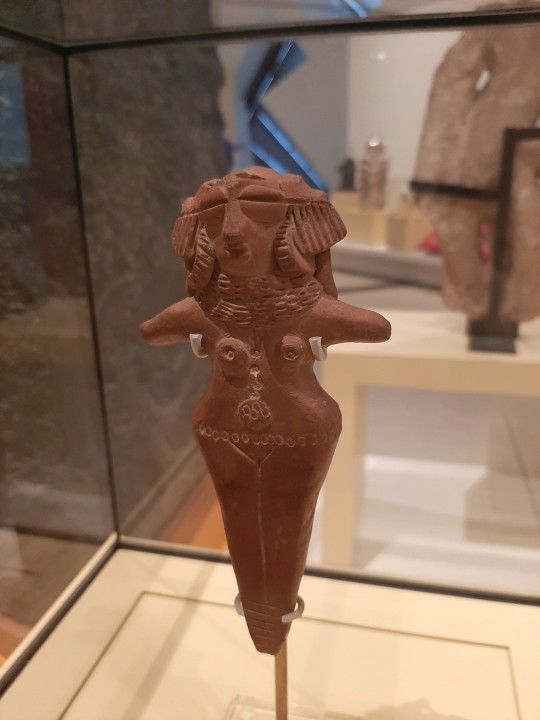
Female figure, possibly a fertility goddess
Northwest Pakistan, terracotta, Sunga period, 3rd century BC
The strictly frontal and rigid posture is characteristic of hand-modelled archaic figures. Distinguished by an elaborate headdress, large slit-pellet eyes, prominent breasts, narrow waist, wide hips, and diminutive limbs, this figure communicates an emphasis on ornamentation and fertility. While it's original function remains unknown, its comfortable fit within the human hand denotes ritualistic use.
#i absolutely adore these terracotta bitches from Northern Pakistan#saw one from charsadda years ago and i still think about her#they look soooo different from the sculptures/statues/figurines made during that time in that area/surrounding areas#Pakistan#women#terracotta#sculpture#sunga#history#mine
49 notes
·
View notes
Text
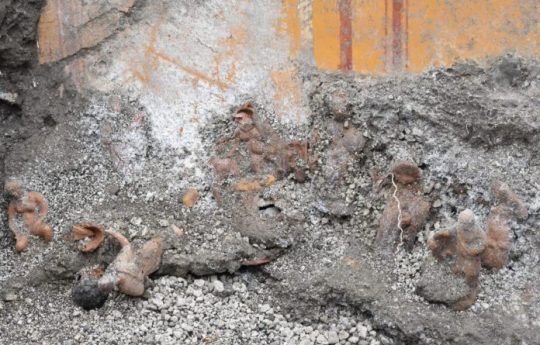
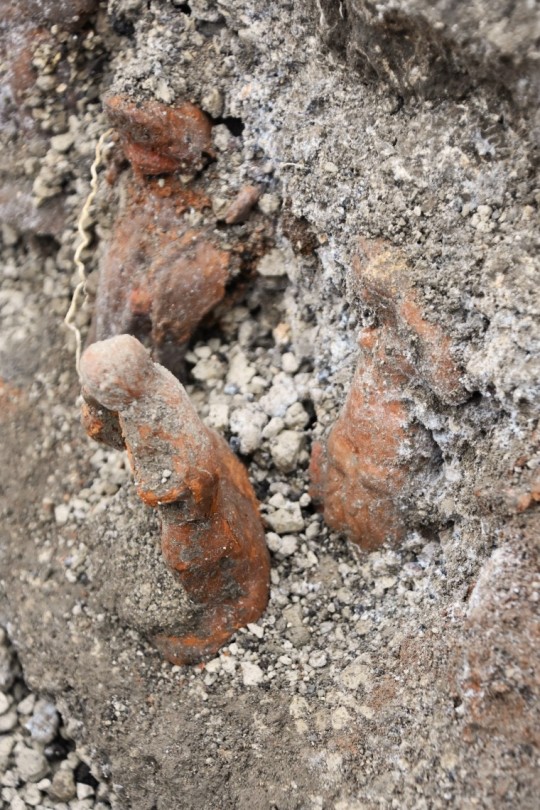
Terracotta Figurines Found During Excavations at Pompeii
Archaeologists have unearthed 13 terracotta figurines during excavations of a domus at Pompeii.
Pompeii was a Roman city, located in the modern commune of Pompeii near Naples, in the Campania region of Italy.
Pompeii, along with the Roman town of Herculaneum, were buried under 4 to 6 metres of volcanic ash and pumice during the eruption of Mount Vesuvius in AD 79.

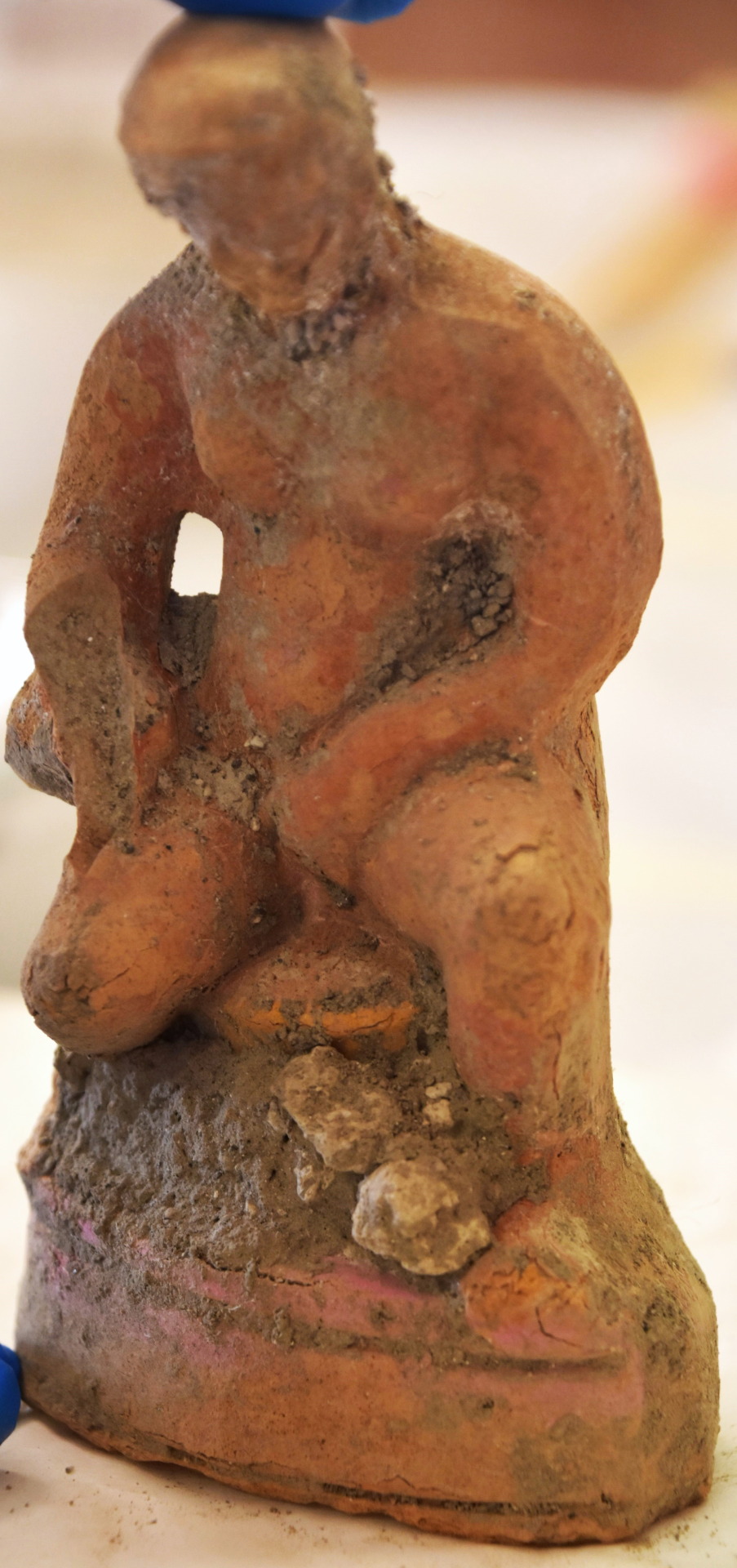
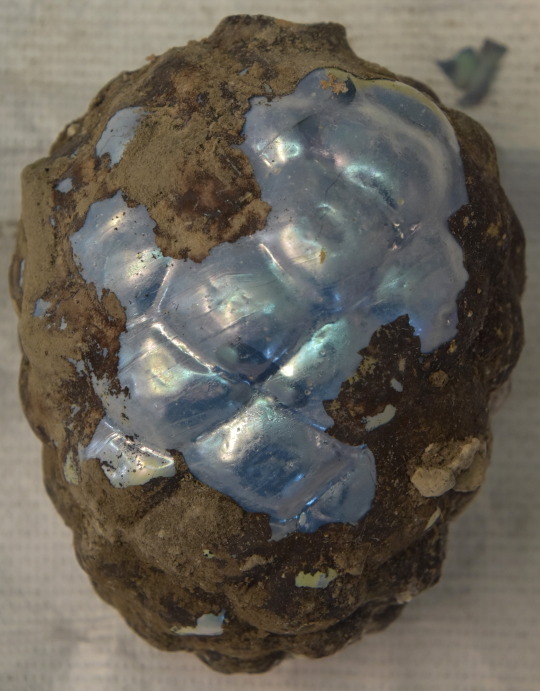
The Vesuvian eruption spewed forth a deadly cloud of super-heated tephra and gases to a height of 33 km, ejecting molten rock, pulverised pumice, and hot ash at 1.5 million tons per second, ultimately releasing 100,000 times the thermal energy of the atomic bombings of Hiroshima and Nagasaki.
Recent excavations of a domus adjacent to the “House of Leda and the Swan” along the Via del Vesuvio have revealed 13 terracotta figurines measuring around 15 centimetres in height.
According to the researchers, the figurines may be associated with Cybele and Attis, a telling of the story of the Phrygian great mother goddess’s tragic love for a mortal.
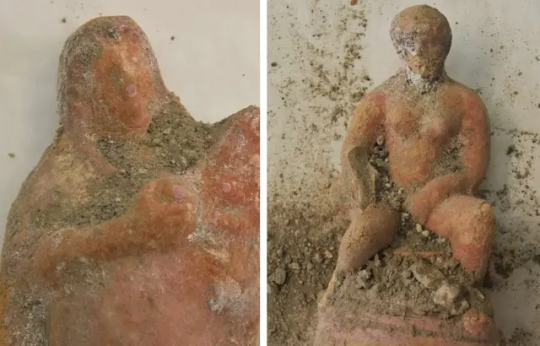

Attis, was unaware of the love Cybele bore him, and in time fell in love with the daughter of the king of Pessinus. Consumed by jealousy, Cybele drove Attis to madness, leading him to castrate himself and tragically end his life at the base of a pine tree.
The figurines where found in what was likely the decorated atrium within the domus, where archaeologists also uncovered the head of a clay rooster and a glass pine cone.
Ongoing works at the House of Leda (first excavated between 2018 and 2019) have also revealed a finely frescoed room with roundels containing depictions of female faces, in addition to two further domus dwellings to the north and south of Leda’s house.
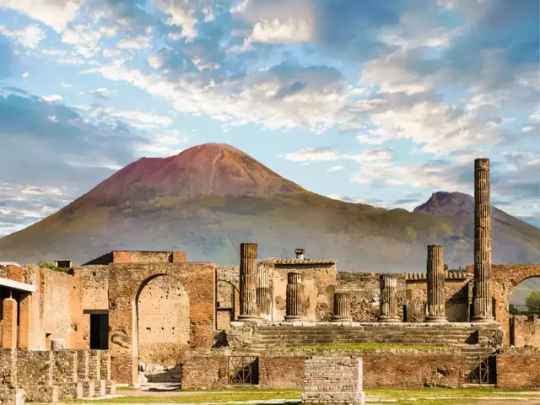

#Pompeii#Terracotta Figurines Found During Excavations at Pompeii#House of Leda and the Swan#Via del Vesuvio#Cybele and Attis#mt vesuvius#ancient artifacts#archeology#archeolgst#history#history news#ancient history#ancient culture#ancient civilizations#roman history#roman empire#roman art
30 notes
·
View notes
Text

Terracotta figurine of a woman wearing a two-stranded necklace, anklets, and a sash
Old Elamite period, ca. 2112-1900 BCE
Susa (Iran, Khuzestan)
Musée du Louvre, Sb 2796
6 notes
·
View notes
Photo

Anémones et Tanagra - Félix Vallotton , 1920.
Swiss, 1865-1925
Oil on canvas, 54 x 65 cm
#Félix Valloton#swiss artist#still life#anémones#book#Tanagra figurine#greek terracotta figurine#Tanagra
136 notes
·
View notes
Photo

Terracotta “phi” figurine
Greek (from the Peloponnesus), Mycenaean Period, 1400-1200 B.C.
Saint Louis Art Museum
#ceramics#terracotta#Ancient Greece#Mycenaean Greece#Mycenaean Period#ancient art#figurine#phi figurine#Greek#Mycenaean#Peloponnesus#SLAM#Saint Louis Art Museum#archaeology#Bronze Age#Late Bronze Age
42 notes
·
View notes
Text

Standing woman, Greece, probably Boeotia, late 4th-early 3rd century BC, terracotta, MET.
#sculpture#art history#antiquity#classical art#greek art#statuette#terracotta#figurine#ancient greece
27 notes
·
View notes
Text

Head from a Figurine of a Child
Indonesia, Eastern Java, 14th/15th century
24 notes
·
View notes